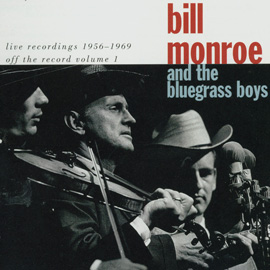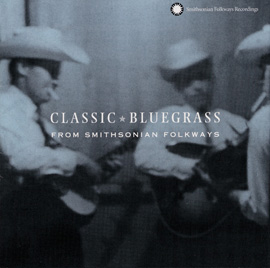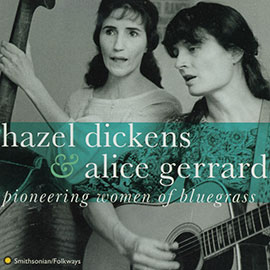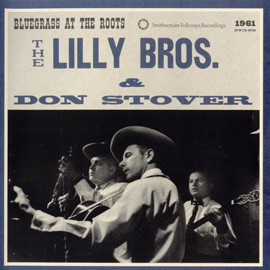Bluegrass on Folkways
Bluegrass music is the synthesis of American southern string band music, blues, English, Irish, and Scottish traditions, and sacred and country music. It is distinguished by its high energy, fast tempo sound. The typical bluegrass band includes 5-string banjo, flat-top guitar, fiddle, mandolin, and bass. The instruments are traditionally acoustic with the guitar and bass carrying the downbeat and providing the rhythmic foundation. Bluegrass songs are played with each melody instrument taking turns carrying the melody while the others revert to backing; this is in contrast to Old-time music, in which all instruments play the melody together.
Unlike country, bluegrass singing is usually high-pitched in the style of Bill Monroe, "The Father of Bluegrass" who originated and perfected what is known as that "high, lonesome sound."
Another unique attribute of bluegrass is the tradition of soloing, or "passing a break." Anyone with an instrument is invited to take a turn soloing, no matter their age or expertise.
Bluegrass music came out of the rural south after World War II, but its roots date back to the 1930s. The genre was named after Bill Monroe's band The Blue Grass Boys who began performing in the 1940s. Bluegrass songs were about issues important to everyday people. Religion was a prominent subject and gospel music figured heavily in the development of the bluegrass sound. Secular songs tended to focus on love, home, and family, sometimes exploring the darker side of these issues.
Bluegrass music is now performed and enjoyed around the world—the International Bluegrass Music Association alone claims members in all 50 states and over 30 countries. In addition to the classic bluegrass style that is still performed widely, bluegrass bands today are influenced by a variety of sources from jazz to Celtic music to rock 'n roll. Song lyrics have been translated into various languages as bluegrass continues to increase its popularity worldwide.





